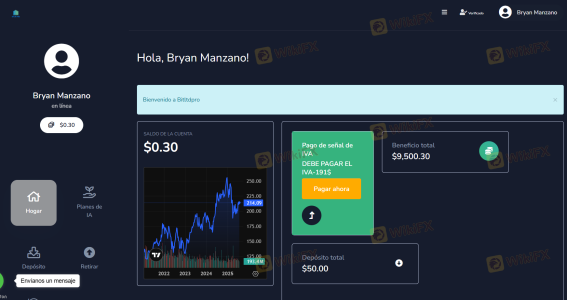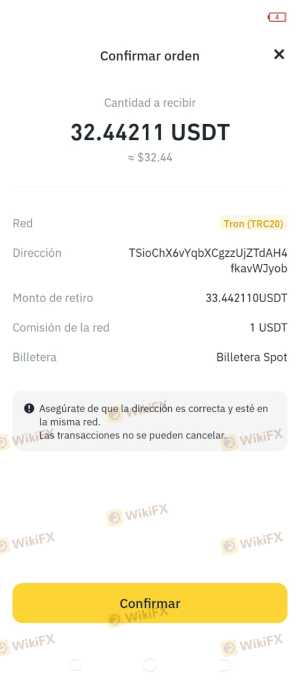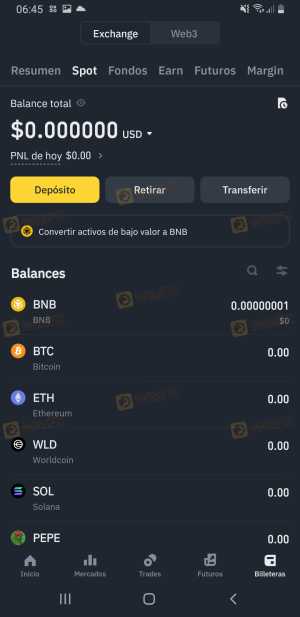Is Binance safe?
Rating Index
Pros
Cons
Is Binance A Scam?
Introduction
Binance, established in 2017 by Changpeng Zhao, has quickly ascended to become one of the largest cryptocurrency exchanges globally, boasting millions of users and a vast array of trading options. The platform facilitates trading in over 500 cryptocurrencies and offers various financial services, including staking and futures trading. However, as the cryptocurrency market continues to evolve, it is crucial for traders to exercise caution when selecting a trading platform. The potential for scams and fraudulent activities in the crypto space remains high, making it imperative for users to critically evaluate the trustworthiness of exchanges like Binance.
In this article, we will conduct a comprehensive analysis of Binance, focusing on its regulatory status, company background, trading conditions, customer security measures, user experiences, platform performance, and associated risks. Our investigation will draw on a variety of credible sources, including regulatory filings, user reviews, and expert opinions, to provide an objective assessment of whether Binance is a reliable trading platform or a potential scam.
Regulation and Legitimacy
The regulatory environment surrounding cryptocurrency exchanges is complex and varies significantly by jurisdiction. Binance's global operations have faced scrutiny from regulatory bodies in multiple countries, raising questions about its compliance and legitimacy. Understanding the regulatory status of an exchange is crucial for traders, as it provides insights into the level of oversight and consumer protection afforded to users.
| Regulatory Body | License Number | Regulatory Region | Verification Status |
|---|---|---|---|
| Financial Conduct Authority (FCA) | N/A | United Kingdom | Not Authorized |
| Commodity Futures Trading Commission (CFTC) | N/A | United States | Under Investigation |
| Securities and Exchange Commission (SEC) | N/A | United States | Under Investigation |
| Autorité des marchés financiers (AMF) | N/A | France | Registered |
Binance has faced significant regulatory challenges, particularly in the United States, where it has been accused of operating without proper licenses and failing to comply with anti-money laundering regulations. The SEC's allegations against Binance and its founder, Changpeng Zhao, include accusations of misusing customer funds and operating unregistered securities exchanges. These legal troubles have led to increased scrutiny and the implementation of stricter compliance measures.
Despite these challenges, Binance has made efforts to enhance its regulatory compliance, including the establishment of Binance.US, a platform tailored to meet U.S. regulations. However, the ongoing investigations and legal issues raise concerns about the exchange's overall legitimacy and its ability to operate within the law.
Company Background Investigation
Binance's rapid growth can be attributed to its innovative approach to cryptocurrency trading and the diverse range of services it offers. Founded in China, the company relocated to Malta in response to regulatory pressures, further expanding its global footprint. The ownership structure of Binance is somewhat opaque, as it operates through various subsidiaries and entities, which can complicate transparency and accountability.
The management team at Binance, led by Changpeng Zhao, has extensive experience in the tech and finance sectors. Zhao's background in software development and his previous roles at other cryptocurrency platforms have positioned him as a prominent figure in the crypto industry. However, the lack of a clear corporate structure and the absence of public financial disclosures have raised concerns about the company's governance and transparency.
In terms of information disclosure, Binance has faced criticism for its communication practices. While the exchange provides some educational resources and updates regarding its services, the overall transparency regarding its operations, financial health, and regulatory compliance remains limited. This lack of clarity can lead to mistrust among potential users and investors.
Trading Conditions Analysis
When evaluating a trading platform, understanding the cost structure is essential. Binance is known for its competitive fee structure, which is generally lower than many of its competitors. However, potential users should be aware of any unusual or hidden fees that could impact their trading experience.
| Fee Type | Binance | Industry Average |
|---|---|---|
| Major Currency Pair Spread | 0.1% | 0.2% |
| Commission Model | Maker-Taker | Varies |
| Overnight Interest Range | 0.01% - 0.05% | 0.02% - 0.07% |
Binance employs a maker-taker fee model, where users who provide liquidity (makers) are charged lower fees than those who take liquidity (takers). This structure is designed to encourage trading activity on the platform. While the fees are generally competitive, users should remain vigilant about potential additional costs, such as withdrawal fees and fees associated with specific trading pairs.
In the past, Binance has faced criticism for its fee structure's complexity, which can be confusing for new users. Additionally, the exchange has been known to impose withdrawal fees that can vary significantly based on the asset being withdrawn. This variability can lead to unexpected costs for users, particularly those trading smaller amounts.
Customer Fund Safety
The safety of customer funds is a paramount concern for any trading platform. Binance has implemented several measures to safeguard user assets, including the use of cold storage for the majority of funds and the establishment of a Secure Asset Fund for Users (SAFU), which is designed to cover potential losses from security breaches.
The exchange's cold storage practices involve keeping the majority of customer funds offline, reducing the risk of hacking and theft. However, users should be aware that while Binance has a robust security infrastructure, no exchange is entirely immune to breaches. The company has faced significant security incidents in the past, including a high-profile hack in 2019 that resulted in the loss of $40 million worth of Bitcoin. Fortunately, Binance covered the losses using its SAFU fund, demonstrating its commitment to customer protection.
In terms of investor protection, Binance offers some level of assurance for U.S. dollar deposits, which are held in insured custodial bank accounts. However, once funds are converted to cryptocurrency, they are no longer insured, which poses a risk for users holding significant amounts of digital assets on the platform.
Customer Experience and Complaints
User feedback is an essential component in assessing the reliability of any trading platform. Binance has garnered a mix of reviews, with many users praising its extensive range of cryptocurrencies and low fees, while others have raised concerns about customer service and the resolution of complaints.
| Complaint Type | Severity Level | Company Response |
|---|---|---|
| Withdrawal Delays | High | Slow Response |
| Account Verification Issues | Medium | Improved Processes |
| Customer Support Accessibility | High | Limited Availability |
Common complaints among users include delays in withdrawals, issues with account verification, and difficulties in reaching customer support. While Binance has made efforts to enhance its support services, including the introduction of live chat options, many users still report slow response times and difficulty resolving issues.
One notable case involved a user who experienced a significant delay in withdrawing funds, leading to frustration and a lack of trust in the platform. Binance's response to this incident was criticized for being inadequate, highlighting the need for improved customer service practices.
Platform and Trade Execution
The performance of a trading platform is critical for users, as it directly impacts their trading experience. Binance offers a sophisticated trading interface with various features, including advanced charting tools and multiple order types. However, users have reported mixed experiences regarding platform stability and order execution quality.
The exchange is known for its high liquidity, which typically results in faster order execution and minimal slippage. However, during periods of high volatility, some users have reported issues with order rejections and execution delays. These incidents can be particularly concerning for traders relying on timely execution for their strategies.
Additionally, there have been concerns about potential platform manipulation, particularly during significant market movements. While Binance has implemented measures to monitor trading activity and detect suspicious behavior, the perception of manipulation can undermine user confidence.
Risk Assessment
Using Binance comes with inherent risks, as is the case with any trading platform. Understanding these risks is crucial for users looking to protect their investments.
| Risk Category | Risk Level | Brief Description |
|---|---|---|
| Regulatory Risks | High | Ongoing investigations and legal issues |
| Security Risks | Medium | Potential for hacks and breaches |
| Customer Support Risks | Medium | Slow response times and issue resolution |
To mitigate these risks, users are advised to enable two-factor authentication (2FA), use strong and unique passwords, and withdraw funds to secure wallets when not actively trading. Additionally, remaining informed about regulatory developments and the platform's operational status can help users make informed decisions.
Conclusion and Recommendations
In conclusion, while Binance has established itself as a leading cryptocurrency exchange with a wide array of services and competitive fees, it is not without its challenges. The ongoing regulatory scrutiny, coupled with past security breaches, raises concerns about the platform's long-term viability and trustworthiness.
For traders considering Binance, it is essential to weigh the benefits against the potential risks. While the platform offers a robust trading experience and a vast selection of cryptocurrencies, users should remain cautious and informed. It may be prudent for new traders to explore other regulated exchanges, such as Coinbase or Kraken, which offer similar services with a stronger regulatory framework.
Ultimately, Binance is not a scam, but its history and current challenges warrant careful consideration. Users should conduct thorough research and consider their risk tolerance before engaging with the platform.



Binance Similar Brokers Safe
Whether it is a legitimate broker to see if the market is regulated; start investing in Forex App whether it is safe or a scam, check whether there is a license.
Binance latest industry rating score is 1.31, the higher the score the safer it is out of 10, the more regulatory licenses the more legitimate it is. 1.31 If the score is too low, there is a risk of being scammed, please pay attention to the choice to avoid.